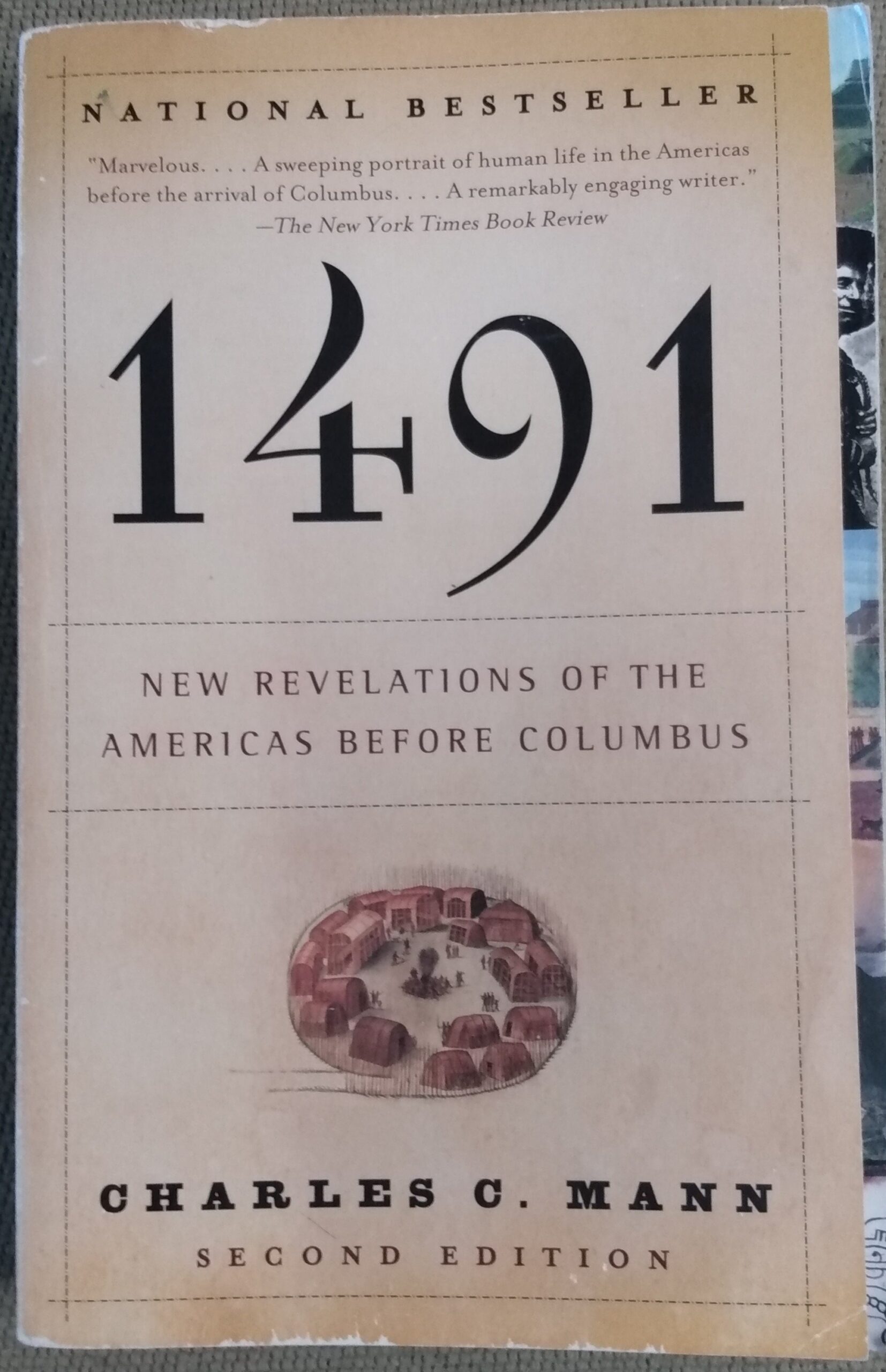
When we were in Chaco Canyon, Brian suggested a book, 1491 – New Revelations of the Americas Before Columbus, that we could buy in the gift shop.
Our travels in the southwest of the United States had brought us to a number of abandoned dwellings and towns of the Ancient Indians (previously called Anastazi). Standing in Chaco Canyon made us realize that the societies here in the 12th and 13th centuries were extensive. He thought that book might help us understand the societies that were in the Americas.
Many Americans have a perception of Columbus and Old World explorers and settlers coming to a wide open land that was sparsely settled with native people living in harmony with the land. By the late 17th century that may have been true but before and shortly after the arrival of Columbus, the Americas were a very different place.
Many areas were developed with cities and extensive agriculture. Indian settlements filled the land from the Amazon watershed to the shores of New England.
There is evidence that the Amazon was densely populated and that the natives actually planted and cultivated what is now the Rainforest. Temples of the Mayans and mounds of the ancient Indian throughout North America are what’s left of their societies.
One of the things that is obvious is the devastation that the diseases brought unwittingly to the Americas from European and African immigrants. With a more limited genetic diversity and sudden exposure to all of these diseases, the native population did not know how to deal with them and died in huge numbers. Where early explorers found densely populated areas, later ones found empty land.
In an appendix, the author spends some time on the possibility that the transfer of disease was a two way exchange. Indians likely provided the Europeans with a much more deadly form of Syphilis than had been present before.
Maize (corn), a crop that sustained the ancient Indians, does not grow wild. Teosinte, corns closest relative, has tiny seeds and they disperse as many other grains do. The single stock with no spreading seeds is unique. One can assume that the Indians developed maize from the Teosinte, but the short duration of the development and the lack of evidence of stages of development left me wondering if ancient aliens may have just given them corn.
He also suggests that the flat social structure of 17th century Indian societies may have influenced our founding fathers to be more suspect of the stratified societies of Europe.
Though this book describes many topics that have been and are controversial, this is not a political book trying to prove a partisan position. The author acknowledges the complexities of the history of the Americas and addresses them including the use of the term “Indian” and its alternatives. It is well documented with 53 pages of End Notes (that I did not read) and 61 pages of Bibliography (I didn’t read the End Notes so why did you think I would be checking any of these).
At over 400 pages it is not light reading but it is well worth it.